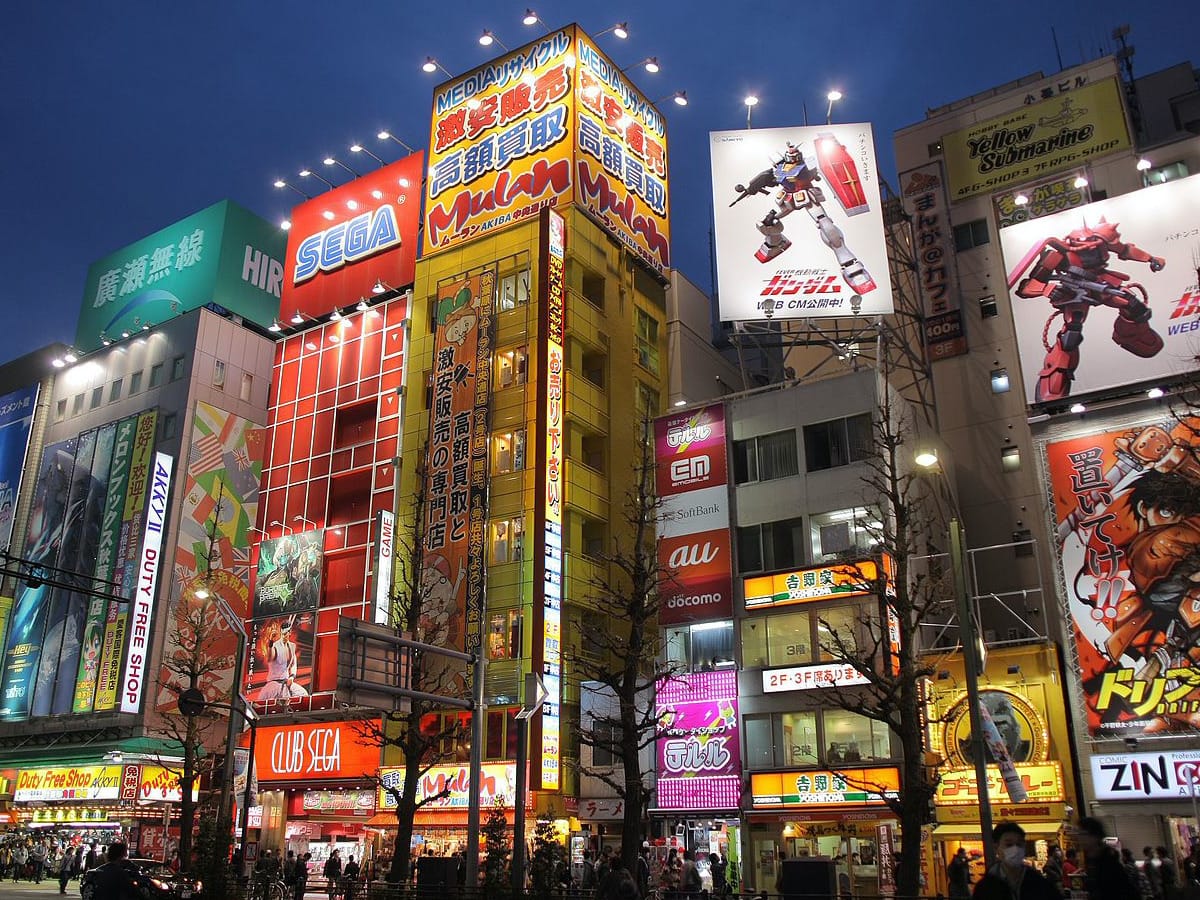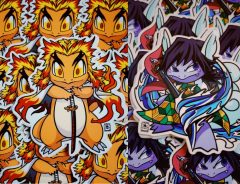
Source: ElHeineken, CC BY 4.0, via Wikimedia Commons
How Akihabara went from consumer electronics mecca to capital of ‘Cool Japan’
- Tags:
- Akihabara / consumer electronics / Cool Japan / Video Games
Related Article
-

Incredible 3D Pokémon Slowpoke latte art has a jiggly tummy you can’t stop touching
-

Get Gear Featuring Namco Bandai, Nintendo & Cave Games at Video Game Tokyo Pop Up Store
-

Players make charming retro Showa era Japan islands in Animal Crossing: New Horizons
-

Universal Studios Japan Is Opening Up Final Fantasy And Sailor Moon Attractions
-

Final Fantasy VII Comes To Life At Sapporo Snow Festival With Brilliant Projection Mapping
-

Artist fuses Pokémon and Demon Slayer: Kimetsu no Yaiba in awesome crossovers


Akihabara has changed a great deal in the last 25 years. Back in the early '90s, when Japanese electronics makers dominated the world and the bubble economy had yet to pop, every other store was selling consumer electronics and the billboards of Akihabara were crowded with advertisements for products made by Sony, Panasonic and Sharp.
Fast forward 30 years, and those household names are conspicuous by their absence. These days, Akihabara's billboards advertise world-famous gaming companies, anime series and manga characters. Consumer electronics stores are outnumbered by shops selling toys, gaming consoles and computer software. Any retail space left over goes to maid cafes and CBD-infused decaffeinated coffee retailers.
How did this happen? Why did the bottom fall out of electronics manufacturing in Japan? And how did Akihabara go from being a showcase for its electronics 'makers' to becoming capital of 'Cool Japan'?
Shoppers on the streets of Akihabara are more likely to be buying games than stereo equipment. | Shiny Things, CC BY 2.0, via Wikimedia Commons
The very idea that Japanese brands would one day lose their domination of the global consumer electronics market would have been unthinkable in 1990. But the advent of the internet stole a march on Japan's household names.
All the same, Japanese companies were well placed to capitalise on the advent of the laptop computer and the smartphone. Some of them were producing mobile phones capable of surfing the internet a decade before the iPhone. The first company to attach a camera to a mobile phone was not Apple, but Sharp.
But Japanese manufacturers failed to market their innovations abroad or radically rethink their designs. As a result, Japan was eventually invaded by smartphones made by Apple (American) and Samsung (Korean). Japan was said to be suffering from the 'Galapagos syndrome.'
Starting in 2012, the electronics giants that once made Japanese proud – Sharp, Panasonic, Toshiba and Sony – were one by one downgraded to so-called 'junk' status by ratings agencies.
In their stead, American companies like Google, Twitter and Apple have become the household names of the internet age. South Korean companies like LG and Samsung dominate the market for consumer durables and electronics, churning out everything from flatscreen TVs to vacuum cleaners. These days, Samsung makes more profits than the top 15 Japanese electronics makers combined, and Sony’s market share is 1/30th of Apple’s.
For a time, Japanese commentators argued that this needn't matter. The name on the box might be that of a Korean or American company, but the hi-tech components in their products were still made by Japanese companies. The products themselves were no longer ‘Made in Japan’, but most of them had ‘Japan Inside.’
Unfortunately, that argument no longer holds water. While 70% of the components of an iPod were made by Japanese electronics makers in 2005, they made up just 20% of the components of an iPad in 2010.
In Whatever Happened to Japanese Electronics? A World Economy Perspective, Steven Vogel of UC Berkeley cites figures that show that Japanese manufacturers’ share of DRAM semiconductor production worldwide dropped from 76% in 1987 to just 3% in 2004. Their share of production of the liquid-crystal displays used in phones and TVs has taken an even more dramatic nosedive, going from 100% in 1995 to just 5% in 2005.
Witnessing such dramatic decline, commentators said that Japan was a country struggling to adapt to the demands of the 21st century. Its economy was too hierarchical to respond effectively; Japanese society had become closed-minded, its people too rigid and uncreative, they said.
A gashapon shop in Akihabara. Gashapon (ガシャポン) are toys sold in capsules from vending machines. The name comes from 'gasha', the sound the machine makes when you crank it, and 'pon', the sound of the toy landing in the collection tray. | Ubahnverleih, CC0, via Wikimedia Commons
But that's too gloomy a prognosis. It's certainly true that Japan's rigid social structure and strong work ethic were perfectly suited to the catch-up phase of industrial development. A lot of the credit has gone to Japanese management, but the excellence of Japan’s organisational capacity is striking and has its origins in village life, and the values inculcated in villagers. Japan urbanised relatively late, when village virtues were still the norm, and after the war, the country's manufacturers used them to build an unbeatable workforce.
Walking the streets of Akihabara, you can't help but conclude that Japan has done remarkably well to adjust to life in the post-industrial era. Its electronics makers are still in business. They might have shifted much of their production to countries with lower labour costs, but they still have unrivalled reputations for quality and can still count on the loyalty of a huge domestic market.
Besides, manufacturing prowess is less important than it was a generation ago. Consumer electronics are not as valuable as they were in the '90s, and many of their functions have been incorporated into laptops and smartphones. What matters these days is the service economy. Content creation and intellectual copyright are king, and Japan has become a major player by exporting cultural products like manga and anime.
These days, games makers like Sega and Nintendo are worth more than the company that makes the TV you play their games on, as the billboards of Akihabara attest. Japan's consumer electronics makers might not feature in the top ten anymore, but its anime, manga and games are world-beaters.
This is good for the 'Cool Japan' brand, which pays rich dividends through the tourism business. Before the novel coronavirus grounded international flights, the tourist trade was a success story, with the number of foreign visitors rising to 34m a year in 2018. Many of them flocked to Akihabara. Japan's consumer electronics manufacturers might have lost market share to their foreign rivals in the first decade of the 21st century, but its 'soft powerhouses' have more than taken up the slack.
____________
Source:
data from True Crime Japan: Thieves, Rascals, Killers and Dope Heads: True Stories from a Japanese Courtroom, Paul Murphy, Tuttle 2016, p.55